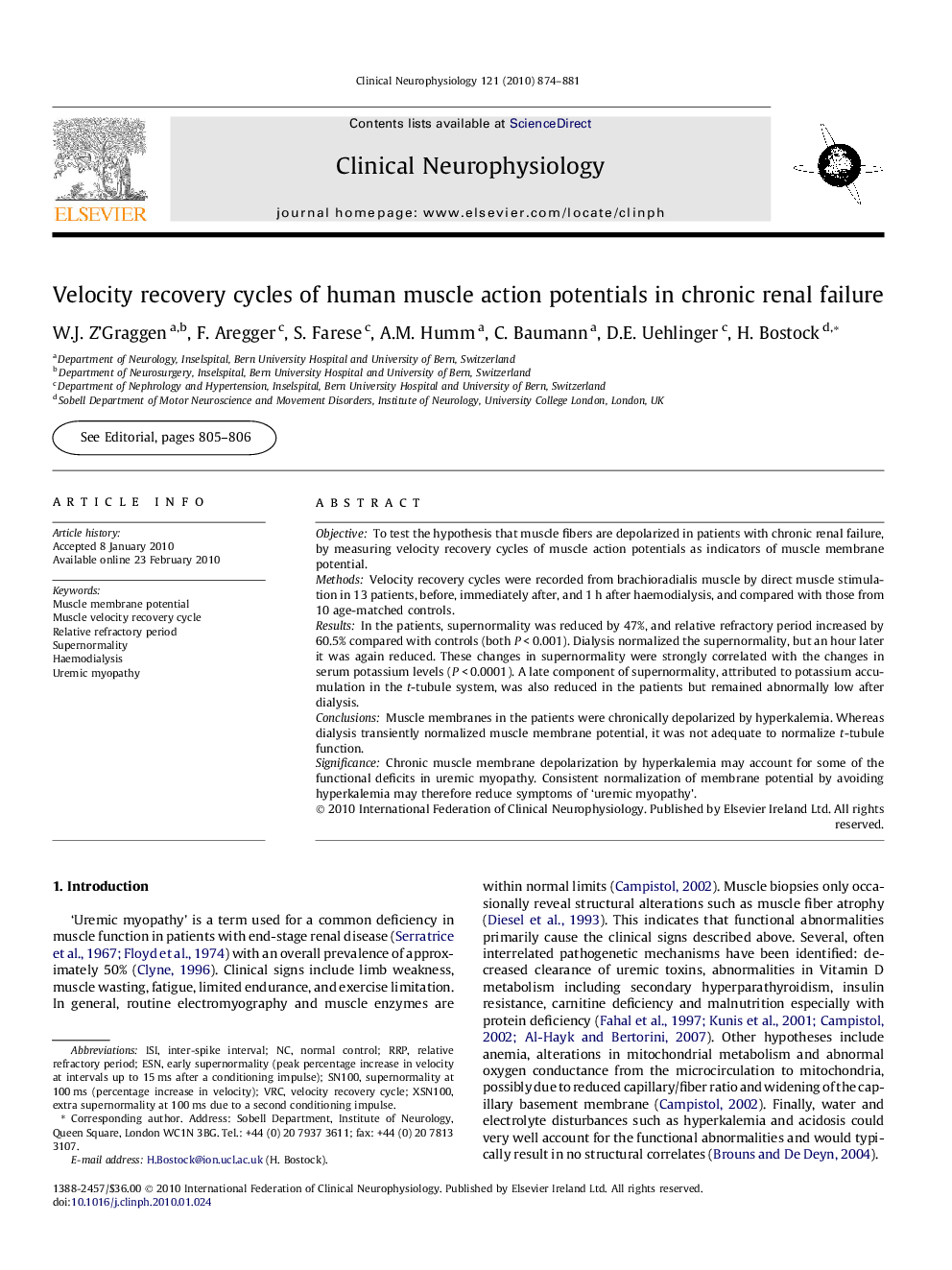| Article ID | Journal | Published Year | Pages | File Type |
|---|---|---|---|---|
| 3045681 | Clinical Neurophysiology | 2010 | 8 Pages |
ObjectiveTo test the hypothesis that muscle fibers are depolarized in patients with chronic renal failure, by measuring velocity recovery cycles of muscle action potentials as indicators of muscle membrane potential.MethodsVelocity recovery cycles were recorded from brachioradialis muscle by direct muscle stimulation in 13 patients, before, immediately after, and 1 h after haemodialysis, and compared with those from 10 age-matched controls.ResultsIn the patients, supernormality was reduced by 47%, and relative refractory period increased by 60.5% compared with controls (both P < 0.001). Dialysis normalized the supernormality, but an hour later it was again reduced. These changes in supernormality were strongly correlated with the changes in serum potassium levels (P < 0.0001). A late component of supernormality, attributed to potassium accumulation in the t-tubule system, was also reduced in the patients but remained abnormally low after dialysis.ConclusionsMuscle membranes in the patients were chronically depolarized by hyperkalemia. Whereas dialysis transiently normalized muscle membrane potential, it was not adequate to normalize t-tubule function.SignificanceChronic muscle membrane depolarization by hyperkalemia may account for some of the functional deficits in uremic myopathy. Consistent normalization of membrane potential by avoiding hyperkalemia may therefore reduce symptoms of ‘uremic myopathy’.
